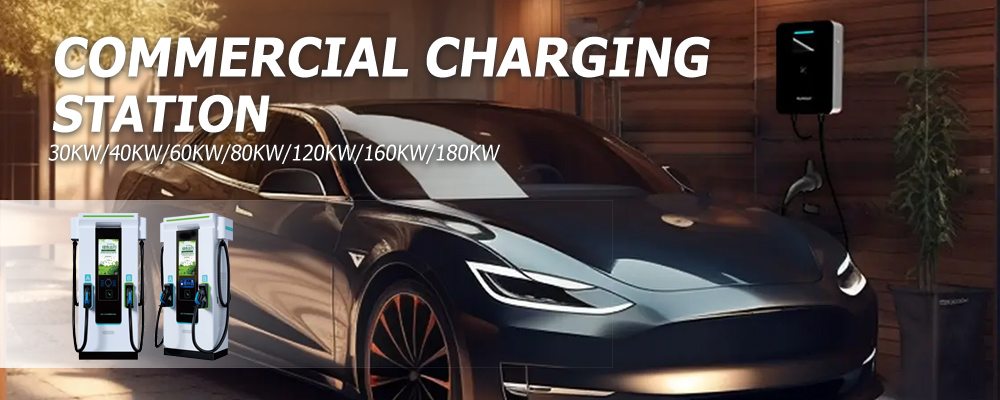Electric vehicles (EVs) are entering our lives at an unprecedented speed. This is not just a revolution in transportation but also a reshaping of energy infrastructure. According to forecasts from institutions like the International Energy Agency (IEA) [External link placeholder for relevant reports, e.g., IEA Global EV Outlook], EV ownership will continue to surge in the coming decade. Under this trend, an efficient, convenient, and safe charging network becomes the lifeline supporting EV development. Whether in a comfortable home garage, a busy city center, or a highway service area, the availability of EV charging stations directly impacts user travel experience and purchase intent. This article will comprehensively analyze various charging solutions, from private home use to public and commercial domains, helping you clearly understand the core points of this emerging field.
Point 1: Home EV Charging Stations are the Cornerstone of Enhancing the EV Experience
Argument: Most daily EV charging occurs at the user's home. Like charging a mobile phone, replenishing the car's energy overnight allows for meeting commute and daily travel needs the next day – a convenience unmatched by gasoline cars. Home charging not only saves time spent searching for public stations but, in the long run, utilizing off-peak electricity rates can also significantly reduce energy costs. Therefore, establishing a safe and reliable home EV charging station is the primary step to maximizing EV advantages and enhancing user satisfaction.
Point 2: Assessing Home Electrical Systems is a Prerequisite for Installing Home Chargers
Argument: Before installing any home car charger (especially Level 2 types, like the common 7kW home charger), a professional assessment of the home's existing electrical system by a licensed electrician is mandatory. This includes checking the main electrical panel's total capacity (amperage), ensuring there is adequate space for a new dedicated breaker, and verifying if existing circuits can handle the sustained load required by the charging station (typically needing 240V). Older homes might have insufficient capacity (e.g., only 60A or 100A), and even newer homes (often 200A) require a load calculation to ensure they won't overload when the charger's demand is added. Neglecting this step can lead to frequent tripping or even electrical fires. [External link placeholder for home electrical safety standards or assessment guides]
Point 3: The 7kW Home Charger is a Mainstream Choice Balancing Efficiency and Cost-Effectiveness
Argument: For most households, a 7kW home charger (usually corresponding to 32A current @ 240V) offers an ideal balance. It's significantly faster than Level 1 (standard 120V outlet) charging, typically fully charging most mainstream EVs overnight (6-8 hours), meeting daily needs. Compared to higher-power chargers (like 11kW or more), the 7kW option generally requires less demanding modifications to the home's electrical grid, making installation costs more manageable. Chargers of this power level often come in a wall-mounted charger design, saving space and being easy to operate.
Point 4: Professional Installation and Quality Materials are Key to Ensuring Charging Safety
Argument: EV charging involves continuous high-current transmission (often for several hours), far exceeding that of typical household appliances. Therefore, using standard-compliant, commercial-grade outlets, wiring, and breakers is essential. As mentioned in the original source text, using low-quality materials or those not designed for sustained high-power draw can lead to melted components, electrical fires, and other severe consequences. Hiring an experienced, qualified electrician who follows local electrical codes, ensures all connections are secure, grounding is proper, and installs appropriately sized breakers (e.g., a 40A breaker for a charger continuously drawing 32A, adhering to the 80% rule) is an absolutely necessary safety investment.
Point 5: Charging Station Location Selection Needs to Balance Convenience, Safety, and Future Expansion
Argument: A garage is often the ideal location for a home EV charging station, but the specific spot requires careful consideration: the relationship between the charging port and the vehicle's port, charge cable length and management, distance to the electrical panel (longer distance increases wiring costs), potential need for trenching, and protection of the unit itself from dust and water. If installed outdoors, factors like theft prevention, protection from harsh weather, and collision avoidance need extra attention. Additionally, if the household plans to own a second EV in the future, reserving space or pathways during the initial installation can reduce future modification costs.
Point 6: Public EV Charging Stations are Lifelines for Long-Distance Travel and Users Without Home Charging Access
Argument: The network of public EV charging stations (including those at highway service areas, city centers, mall parking lots, etc.) is crucial for eliminating users' "range anxiety" and enabling long-distance travel. For users living in apartments or without fixed parking spaces, public stations are their primary charging method. Public stations often offer faster charging speeds (Level 3 DC fast charging), capable of adding significant range in a short time (e.g., 30-60 minutes). [External link placeholder for major public charging network operators or map services like ChargePoint, Electrify America, PlugShare, etc.]
Point 7: Commercial Charging Stations Add Value for Businesses and Destinations
Argument: Commercial charging stations or commercial EV charging stations (typically installed at office buildings, shopping centers, hotels, restaurants, etc.) not only serve employees and customers but also become an effective means to attract and retain clients and enhance corporate image (especially regarding sustainability). These stations can be offered as a free value-added service or create new revenue streams through fee-based models. For commercial properties, providing adequate charging facilities is increasingly becoming a standard amenity to attract tenants and visitors.
Point 8: Diversity and Complementarity of Charging Infrastructure are Key to Ecosystem Success
Argument: A well-rounded EV charging ecosystem requires the synergistic development and complementarity of home EV charging stations, public EV charging stations, and commercial charging stations. Home charging meets basic daily needs, public fast charging addresses long-distance and emergency top-ups, and commercial charging fills the gaps during work, shopping, leisure, etc. Different types of charging stations (like wall-mounted chargers, pedestal chargers) and various power levels (like the 7kW home charger, 50kW+ fast chargers) together form a multi-layered network meeting the diverse needs of different users and scenarios.
(Conclusion and Summary)The future of electric vehicles is here, and charging infrastructure is the engine driving this future. Whether it's the convenient and comfortable home car charger (especially the popular 7kW wall-mounted charger), the public EV charging station ensuring freedom of travel, or the commercial EV charging station enhancing business value, each plays an indispensable role in this new ecosystem.
For individual users, understanding home electrical conditions, selecting appropriate charging equipment, and emphasizing professional installation and safety standards are prerequisites for enjoying the convenience of EVs. For society as a whole, accelerating the deployment of public and commercial charging networks, ensuring they are widely accessible, easy to use, and well-maintained, is key to promoting the large-scale adoption of electric vehicles.
Ultimately, a comprehensive network composed of efficient, safe, and convenient various EV charging stations will fundamentally change our mode of transport, accelerating the transition towards a cleaner, more sustainable transportation future. Investing in this, whether through individual decisions or societal actions, is a wise move in embracing this transformation.
Note:
The structure, core arguments, and keywords from the Chinese version have been maintained.
Placeholders indicate where you should insert relevant, authoritative external links to enhance the article's credibility and SEO value, ensuring they align with Google's guidelines.
The translation aims for clarity, accuracy, and natural English phrasing suitable for an informative article.

